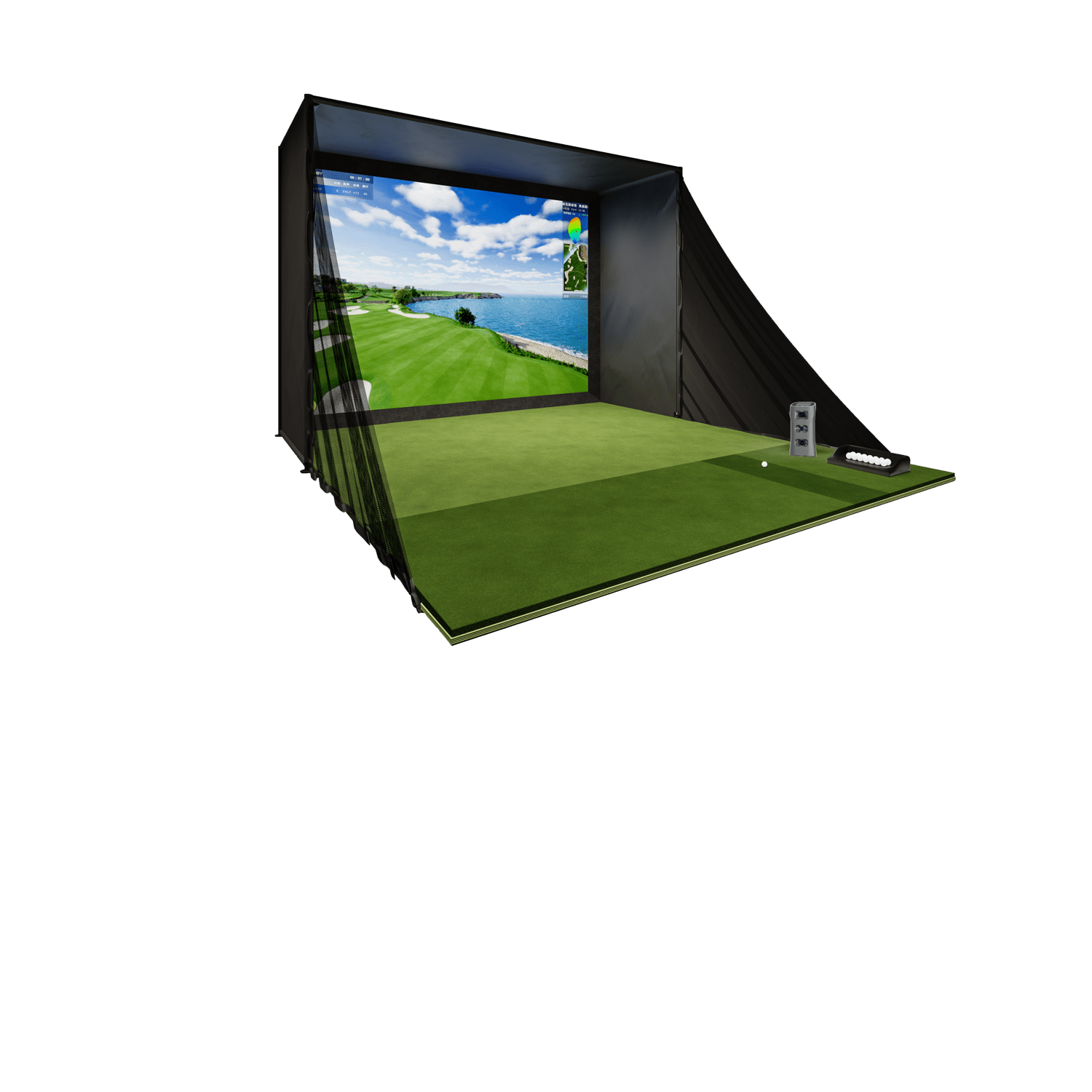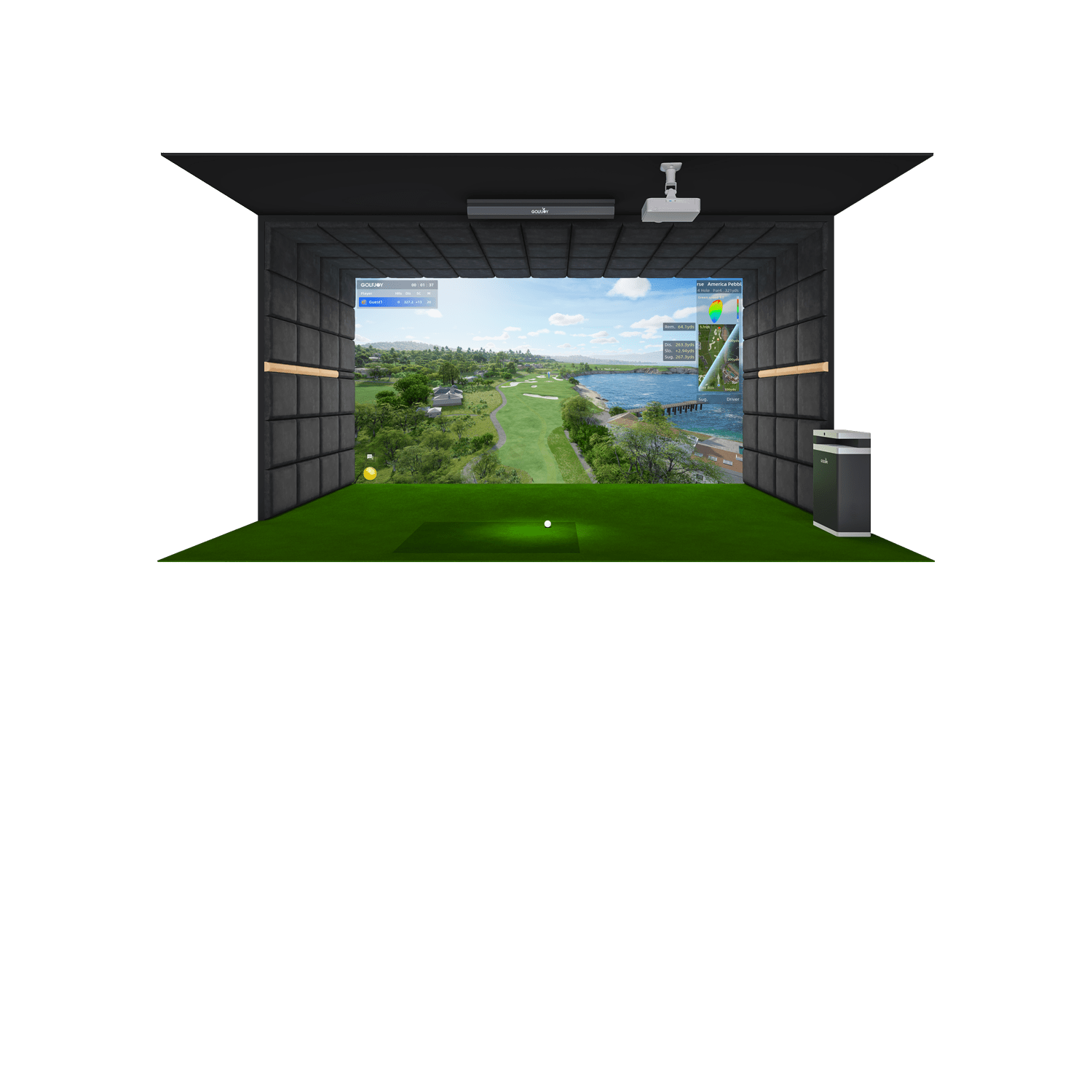In today's increasingly competitive retail landscape, how can shopping malls, commercial complexes, and high-end real estate projects attract more visitors, extend dwell time, and drive higher conversion rates? The answer for a growing number of commercial operators is the indoor commercial golf simulator—a high-end, immersive experience that not only elevates the venue's image but also delivers sustained and measurable foot traffic growth.
So how can a commercial golf simulator for sale appeal to real estate developers, entertainment complexes, and fitness centers? In this article, we'll break it down across three key areas: business pain points, return on investment, and revenue potential—demonstrating how this technology becomes a powerful "traffic engine" for brick-and-mortar businesses.
Addressing Key Challenges in Commercial Operations: How a Commercial Golf Simulator Provides Smart Solutions?
Boring Copycat Stores? Golf Simulators Attract Affluent Shoppers
Shopping centers often rely on F&B, cinemas, and other conventional tenants, lacking experiential differentiation.
As a "premium leisure offering," the commercial golf simulator appeals directly to mid-to-high-end customer segments, enhancing the perceived value of the venue.
Weekday Slumps—How to Maximize Off-Peak Hours?
Weekends may be bustling, but Monday through Thursday often see low foot traffic, leaving valuable space underutilized.
Golf simulators open up opportunities for corporate team-building, youth training programs, and member tournaments—unlocking consistent B2B income during slow periods.
Low Frequency, High Cost—How to Drive Repeat Visits?
Experiences like VR arcades or escape rooms often suffer from low repeat rates—visitors lose interest after one or two tries.
The commercial indoor golf simulator, however, has strong social and competitive elements, encouraging users to return regularly to improve their skills and compete with others. Its stickiness far exceeds typical entertainment offerings.
Operational Costs vs. Returns: How Does It Balance Out?
|
Metric |
Commercial Golf Simulator |
Traditional Entertainment Equipment |
|
Session Duration |
30–60 minutes (high dwell time) |
5–15 minutes (short experience) |
|
Average Ticket Price |
20–60USD/hour (high-margin) |
10–20USD/session (low-margin) |
|
Repeat Rate |
60%+ (strong member retention) |
<30% (one-off usage) |
|
Space Requirements |
15–20㎡ (space-efficient) |
Typically larger footprint |
|
Maintenance Cost |
Low (no consumables, remote updates) |
High (frequent repairs, quick obsolescence) |
Investment Return Example (Shopping Mall Scenario):
Initial investment (equipment + installation): 15,000–40,000USD (depending on model).
Daily average sessions: 8–12 groups (double on weekends).
Monthly revenue: 4,000–8,000USD (20–30USD per session × 150–300 sessions).
ROI period: 6–12 months—faster than most entertainment formats.
How to Operate a Commercial Golf Simulator for Maximum Business Value?
Membership Programs + Private Lessons (High Repeat Engagement)
Introduce monthly or annual membership packages combined with professional coaching to increase user loyalty.
Case Study: Some high-end shopping centers achieve over 140,000USD in annual revenue per simulator through prepaid membership models.
Corporate Partnerships + Branded Tournaments (Stable B2B Revenue)
Offer private event bookings, corporate team-building sessions, and co-branded tournaments to diversify revenue.
Case Study: A luxury real estate project hosts a monthly "Executive Golf Challenge", increasing F&B and retail sales by 30%.
Experiential Marketing (Boost Venue Atmosphere)
Integrate with pop-up brands or luxury exhibitions to create a "golf + social" experience, drawing in affluent, lifestyle-focused audiences.
Commercial Golf Simulator: A Traffic Accelerator for Brick-and-Mortar Businesses
Unlike traditional entertainment devices, a commercial golf simulator for sale offers high ticket value, high repeat usage, and low maintenance—making it a compelling addition to elevate venue positioning while generating consistent cash flow.
For commercial developers, entertainment venues, and fitness chains, this is more than just an equipment investment—it's a sustainable revenue stream and a competitive differentiator.
As golf becomes increasingly mainstream, concepts like in-mall golf zones, simulator corners in high-end gyms, and hotel golf lounges are poised for rapid growth. Early adopters of this model will gain a significant competitive edge in the retail and leisure market.











Leave a comment
All comments are moderated before being published.
This site is protected by hCaptcha and the hCaptcha Privacy Policy and Terms of Service apply.